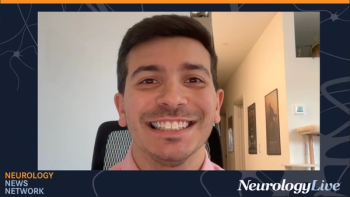
Age of Onset and Vision Loss in Neuromyelitis Optica Spectrum Disorders

The neurologist from Cleveland Clinic discussed how patients with early-onset NMOSD were more likely to have severe residual vision loss.
A recent study found that patients with an age of onset (AO) of neuromyelitis optica spectrum disorders (NMOSD) of under 21 years of age were
Patients with an AO less than 21 years were less likely to receive high-efficacy, first-line therapy, and were rather were more likely to be started on an oral immunosuppressant first line (P = .042). Azathioprine first line was received in 57 (53.8%) patients, rituximab in 25 (23.6%), mycophenolate mofetil in 13 (12.3%), methotrexate in 4 (3.8%) and inebilizumab as part of a clinical trial in 2 (1.8%).
NeurologyLive reached out to first author Gabrielle Macaron, MD, neurologist, Cleveland Clinic, to learn more about the associations between AO and vision loss. She discussed how many medications have not been extensively studied in pediatric NMOSD.
NeurologyLive: Were you surprised by the associations you found with age of onset of NMOSD?
Gabrielle Macaron, MD: We weren't really surprised, because after reviewing the literature, we realized that many articles previously reported predictors of worse outcomes in NMOSD. Some studies did see the same results, that younger patients were more prone to have worse visual outcomes than older patients, but those results were not consistently seen in all studies. It also seemed like there was a difference based on race and based on country. So that's why we're interested in looking into this and seeing if we could find other predictors of worse visual outcomes, and if we could confirm or inform those findings. We wanted to find outcome predictors because we know that in NMOSD, disability is really attack related, so it is very important to identify early predictors of disability and handicap in patients early in the disease course. We focused on visual outcomes.
Why do you think it is that patients with an age of onset under 21 years old were more likely to receive first line oral therapy instead of more efficacious treatments?
In the literature of pediatric onset multiple sclerosis, we see that people usually use a more conservative approach with younger individuals. I think this comes from the fact that not all medications have been extensively evaluated in younger patients with such diseases. We don't know much about using highly efficacious medication in younger individuals, especially in the pediatric population, so we're always worried that they might have some irreversible adverse effects or lower their immunity. Most highly efficacy medications haven't really been evaluated in pediatric diseases, and I think this also happens in NMOSD.
And let's not forget that these diseases are rare in kids, and they're rare in adolescence. They usually happen in young adulthood. I really think that it's more feeling comfortable in using those medications or not. What we found in our study is that comparable to what we’ve seen in pediatric MS, younger patients are more often treated in a more conservative approach using milder oral immunosuppression than rituximab, for example. We know that there's a difference in efficacy as well in NMOSD that is based on observational data and on comparative effectiveness studies showing that oral azathioprine and mycophenolate mofetil are less effective than rituximab in NMOSD.
Transcript edited for clarity.
REFERENCE
Macaron G, Khoury J, Bena J, et al. Early age of onset predicts severity of visual impairment in patients with neuromyelitis optica spectrum disorder. Mult Scler J. Published online January 6, 2021. doi: 10.1177/1352458520981736
Newsletter
Keep your finger on the pulse of neurology—subscribe to NeurologyLive for expert interviews, new data, and breakthrough treatment updates.



































